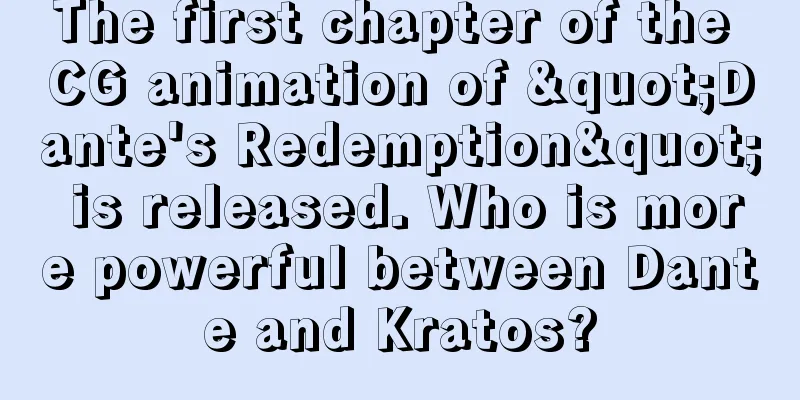Gulliver's Adventures: A Deep Look at the World of Adventure and Lessons

Detailed review and recommendation of Gulliver's Tale■ Public Mediatheater ■ Original MediaAnime Original ■ Release dateDecember 1950 ■Frequencies11 mins ■ Number of EpisodesEpisode 1 ■Original StoryShinpei Yamaguchi ■ DirectorTonokiyo Kuroda, Shigeyuki Ozawa ■ ProductionModern Film Company, Masao Tsukimura Planning, National Tax Agency ■ Storydetail After landing in the land of the Little People, Gulliver is denied food and forced to sleep. Floods and fires occur, but Gulliver is given food and encouraged, so he hustles to prevent accidents. ■Explanationdetail A video that promotes tax payment through the exploits of Gulliver in the land of the Lilliputians. ■ Main staffdetail・Screenplay: Katsushige Toba ・Cinematography: Ichiro Kitamura ・Music: Kazuo Kojima/Tokyo Symphonic Ensemble ・Direction: Tonoki Kuroda ・Cinematography: Shigeyuki Ozawa ■Detailed evaluationAmong the Japanese animation films of the 1950s, "Gulliver's Tale" occupies a particularly unique position. This work deals with a very interesting theme of conveying the importance of paying taxes through the story of Gulliver's struggle in the land of the little people. Below, we will explain in detail the appeal and background of this work, as well as the recommended points. The appeal of the storyThe story of "Gulliver's Adventure" is simple, with Gulliver landing in the land of the Little People and struggling to find food. However, crises such as floods and fires occur along the way, and Gulliver is shown overcoming them. This simplicity, in turn, leaves a strong impression on the audience. In particular, the scene in which Gulliver regains his strength after being given food and prevents an accident has a great visual impact. Animation TechnologyConsidering the animation technology of the 1950s, "Gulliver's Tale" has a quality that does not feel the limitations of that era. In particular, in the flood and fire scenes, the background movement and use of color are very clever, maximizing the visual effect. Gulliver's movements are also smooth, and the characters' emotional expressions are rich. This can be said to be the result of the technical skills of directors Tonokio Kuroda and Shigeyuki Ozawa, and the efforts of the staff. Music and SoundThe music was created by Kazuo Kojima and the Tokyo Symphonic Ensemble. The music, especially in scenes that create a sense of tension, plays a role in enhancing the emotions of the viewer. The sound effects are also very realistic, and in scenes of floods and fires, the sounds of flowing water and burning fire are realistically reproduced. These music and sounds further enhance the progression of the story. Social significance"Gulliver's Tale" is not just an entertainment piece, but also a promotional video that conveys the importance of paying taxes. Japan in the 1950s was in the midst of post-war reconstruction, a time when the tax payments of each citizen were directly linked to the development of the nation. This work reflects this social background, and appeals to viewers through Gulliver's struggles about the importance of paying taxes. In this respect, "Gulliver's Tale" is more significant than just an animated work. ■ Recommendation points"Gulliver's Tale" is a highly recommended work for the following reasons: 1. The simplicity and impact of the storyThe story is simple, yet visually impactful, making it enjoyable for a wide range of audiences, from children to adults. Through Gulliver's struggles, viewers can learn about the importance of courage and hard work in overcoming difficulties. 2. High-quality animationConsidering the animation technology of the 1950s, "Gulliver's Tale" is of very high quality. In particular, the movement of the background, the use of color, and the movements of the characters bring out the maximum visual effect. This is a very valuable work for learning about the history of animation technology. 3. Music and Sound EffectsMusic and sound enhance the progression of the story and play a role in evoking emotions in the viewer. In particular, the music in scenes that create a sense of tension and the sound effects in scenes of floods and fires, combined with the visual effects, improve the quality of the work as a whole. 4. Social Significance"Gulliver's Tale" is also a promotional video that conveys the importance of paying taxes. Reflecting the social background of Japan in the 1950s, it appeals to viewers about the importance of paying taxes through Gulliver's struggles. In this respect, it is more significant than a mere entertainment piece. ■ Additional information"Gulliver's Tale" was produced by Kindai Eigasha and Masao Tsukimura, and released as a project of the National Tax Agency. The screenplay was written by Katsushige Toba, the cinematography was by Ichiro Kitamura and Shigeyuki Ozawa, and the music was by Kazuo Kojima and the Tokyo Symphonic Ensemble. Thanks to the efforts of these staff, "Gulliver's Tale" has become one of the most highly regarded animated works of the 1950s. ■ Related worksOther highly acclaimed Japanese animated films from the 1950s, like "Gulliver's Tale," include "Momotaro: The Sea God Soldiers" and "Animal Trains." These films are also characterized by the simplicity of their stories and the high level of animation techniques, and like "Gulliver's Tale," they leave a strong impression on viewers. These films also have social significance and are recognized as works that reflect Japan's post-war reconstruction period. ■How to watch"Gulliver's Tale" can now be viewed on DVD and online. In particular, it can be viewed on video sharing sites such as YouTube. DVDs and Blu-rays can also be rented or purchased from libraries and stores specializing in animated films. When viewing, please pay attention to the simplicity of the story, the high level of animation technique, the effects of music and sound, and the social significance. ■ Summary"Gulliver's Tale" occupies a unique position among Japanese animated films of the 1950s. It has many appealing features, including the simplicity and impact of the story, the high level of animation technique, the music and sound effects, and the social significance. For these reasons, "Gulliver's Tale" is a highly recommended work, and I hope many people will watch it. |
<<: "The Magic Shoes" Review: A Captivating Story and Deep Characters
Recommend
Dilireba and Wu Lei star in the comic adaptation drama "The Long Ballad" and the first trailer is released. Tencent Video exclusively broadcasts
The comic-adapted costume historical legendary dr...
Pixar's "Soul" officially previewed by the "Inside Out" team
Pixar's new animated film "Soul", c...
Pokémon Diamond & Pearl Platinum: Arceus and the Conquest of Space-Time - A thorough review of the moving story and epic adventure
Pokémon Diamond & Pearl Platinum: Arceus and ...
"Trinity Seven" Review: Magic and Youthful Harem Battle
Trinity Seven - A tale of magic and youth "T...
"Stranger Things" Season 4 Chinese trailer "Welcome to California"
Netflix released the latest Chinese trailer for &...
The new manga project of "The Prince of Tennis" welcomes the challenge from aliens!
The official Twitter account of the "New Pri...
Hugh Jackman: I'm not planning to play Wolverine again before Deadpool 3
In an interview with DEADLINE, Hugh Jackman comme...
Uncle Mark renews contract with Marvel and confirms his appearance in the new drama "She-Hulk"
Today (March 11), according to foreign media The ...
P1S Pacific Rim Danger Ranger Statue Price: $1,849
Recently, the famous model manufacturer Prime1Stu...
Review of "The Guardian of the Spirit": A fascinating world view and deep story
"Guardian of the Spirit" - A grand stor...
Sanrio's Cute Pet Selection 2023 is out, and the Big Eared Dog tops the list for four consecutive years
Sanrio, which owns the intellectual property righ...
The appeal and reviews of "Time Bokan Series Itadakiman": Unmissable episodes and a deep look into the characters
Time Bokan Series Itadakiman - Detailed Review an...
Japanese media voted for talented cartoonists and ranked Oda second, surpassing Akira Toriyama
Japan has many great cartoonists, many of whom en...
Review of "The Crest of the Stars": A fusion of epic space warfare and deep human drama
"Crest of the Stars": A grand story tha...
Lu Yang, the director of "Blade of the Assassins", uses Unreal Engine 4 in his new film: Looking forward to Unreal Engine 5
Last night, Epic released the first demo of Unrea...









